I have a table below and would like to apply ROW-level heat maps.
(1) Any idea how? Right now the heat map is the same for both values in the single row below.
(2) Is there a way to make the header for the group column NOT be angled 90 degrees? Right now all headers are angled but for the group column it be better without angle=90.
here is the rmd file.
---
title: "Untitled"
output: pdf_document
---
```{r setup, include=FALSE}
knitr::opts_chunk$set(echo = TRUE)
library(dplyr)
library(kableExtra)
#d = data.frame(group= c("A","b"),cat1=c(2,50),cat2=c(100,2))
d = data.frame(group= c("A"),cat1=c(2),cat2=c(NA))
d = d %>%
mutate_if(is.numeric, function(x) {
cell_spec(x, "latex", bold = F, background = spec_color(x,option="C", begin=.5, end = 0.99))
})
```
```{r table , echo= FALSE, comment = FALSE, message= FALSE, warning = FALSE, fig.height=3, fig.width = 8}
kable(
d, format ="latex",
caption = "",
booktabs = T,
longtable = T,
escape = F ,
align = "c"
) %>% kable_styling(latex_options = c(
"striped",
"repeat_header"
)
)%>% row_spec( 0,angle = 90)
```
Note: Ideally it'd be good to have this done with the kableExtra functionality so they color schemes match exactley to other kableExtra tables.
